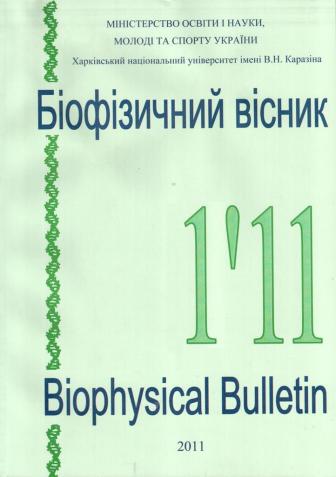Obtaining of chitosan-hydroxyapatite coatings for medical implants
Abstract
The influence of chitosan addition on morphology, phase and elemental composition of hydroxyapatite
coatings were investigated. Composite coatings containing chitosan and hydroxyapatite (HA) were prepared by thermal substrate method. Coatings were deposited from aqueous solution which included 10
mmol/dm3 CaCl2 and 6 mmol/dm3 NaH2PO4, at pH=6,5 onto Ti6Al4V substrates, which were heated with
the passage of alternating current to temperature 105ºC. Scanning electron microscopy (SEM), energy dispersive x-ray spectroscopy (EDS) and X-ray diffraction (XRD) were employed in the study of coatings morphology, phase and elemental analysis after deposition. The influence of chitosan addition on coatings characteristics was examined. The aim of chitosan addition to hydroxyapatite coatings was to raise their bioactivity as a material for medical implants. Chitosan was added to hydroxyapatite coatings in three various ways: before deposition of HA coatings, after deposition of HA coatings and coprecipitation from aqueous solution, which contains chitosan in different concentrations, and precursors for HA synthesis. Composite coatings which phase and elemental composition conform to HA were obtained by coprecipitation from aqueous solutions. The experimental XRD results showed that crystal size of HA decreased with increasing concentration of chitosan in aqueous solutions. Chitosan pretreatment before HA deposition provided adherence of HA coatings to substrate surface and it was also an effective method of chitosan injection to composite material. HA coating immersion to concentrated (1g/l) chitosan solution in 1% CH3COOH lead to changing of coatings morphology and partial dissolution of the coating
Downloads
References
2. Белякова Елена Германовна Технология гидроксиапатита кальция – стимулятора остеосинтеза: Дис. на соискание степени канд. техн. наук 05.17.01. Екатеринбург, 2002.
3. Комлев Владимир Сергеевич Пористая гидроксиапатитная керамика и композиционные материалы на её основе. Дис.на соискание степени канд. техн. наук. 05.17.11. – М.:, 2001.
4. Безруков В.М., Григорьянц Л.А., Зуев В.П., Панкратов А.С. Оперативное лечение кист челюстей с использованием гидроксиапатита ультравысокой дисперсности // Стоматология,1998. – №1. – С. 31-35.
5. Карлов А.В. Использование имплантатов с биоактивным покрытием при лечении переломов ос-лабленных костей. // Тр. конгресса «Человек и его здоровье». – СПб, 1999. – С. 55.
6. A. Di Martino et al Chitosan: A versatile biopolymer for orthopaedic tissue-engineering // Biomaterials 26 (2005) 5983-5990.
7. Lee J.Y., Nam S.H., Im S.Y., Park Y.J., Lee Y.M., Seol Y.J., Chung C.P., Lee S.J. Enhanced bone formation by controlled growth factor delivery from chitosan-based biomaterials // J. Control Release. – 2002. - №78. – р.187–197.
8. Bumgardner J.D., Wiser R., Gerard P.D., Bergin P., Chestnutt B., Marin M., Ramsey V., Elder S.H., Gilbert J.A. Chitosan: potential use as a bioactive coating for orthopaedic and craniofacial/dental implants // J. Biomater. Sci. Polym. Ed. – 2003. - №14. – р. 423–38.
9. Wang J, de Boer J, de Groot K. Preparation and characterization of electrodeposited calcium phosphate/chitosan coating on Ti6Al4V plates. // J. Dent Res. - 2004. - №83. – р. 296–301.
10. Igor Zhitomirsky, Xin Pang Chitosan-hydroxyapatite nanocomposite coatings for biomedical applica-tions // Surfaces and Interfaces in Nanostructured Materials II Edited by S.M. Mukhopadhyay, N.B. Dahotre, S. Seal, and A.Agarwal TMS (The Minerals, Metals & Materials Society), 2006.
11. Гудакова А.А., Суходуб Л.Ф., Павленко П.А. Получение покрытий хитозан-гидроксилапатит на Ti6Al4V субстратах // Тезисы ІІ международной конференции НАНСИС-2007. – Киев, 2007. – С. 342.
12. L.B. Sukhodub, C. Moseke, L.F. Sukhodub at al Improved thermal substrate method with cooling system for hydroxyapatite coatings on titanium substrates, Annual report (2002/2003) Institut fur Kernphysik Westfalishe Wilhelmsuniversitet Muenster, 86-88.
13. Калита В.И. Физика и химия формирования биоинертных и биоактивных поверхностей на имп-лантантах. Обзор.// Физика и химия обработки материалов. – 2000, №5, С.28 – 45.
14. А.А. Гудакова, П.А. Павленко, Л.Ф. Суходуб «Влияние хитозана на морфологию и стехиомет-рию кальций-фосфатных покрытий» ІV Всеукраїнська науково-технічна конференція студентів, аспірантів і молодих вчених «Актуальные вопросы теоретической и прикладной биофизики, фи-зики и химии» «БФФХ – 2008», м. Севастополь, 21-26 квітня 2008 р. – С. 145-148.
15. И.А. Евдокимов, С.В. Василисин, Л.Р. Алиева, М.С. Золоторева, Д.Н. Володин Физико-химические характеристики растворов хитозана // Вестник СевГТУ, серия «Продовольствие». №1 (6), 2003.
16. W. P. Cheng, F. H. Chi, R. F. Yu, Y. C. Lee Using Chitosan as a Coagulant in Recovery of Organic Matters from the Mash and Lauter Wastewater of Brevery // Journal of polymers and the Environment Vol. 13, № 4, October, 2005. P. 383-388.
17. T. W. Wong Chitosan and its Use in Design of Insulin Delivery System / Recent Patents on Drug Deli-very & Formulation, 3. – 2009. P 8-25.
18. Z. Modrzejewska, W. Maniukiewicz, A. Wojtasz-Pająk Determination of hydrogel chitosan membrane structure // Polish Chitin Society, Monograph XI, 2006. – P. 114-115.
19. M. Jaworska et al. Influence of chitosan characteristics on polymer properties. I: Cryctallographic properties // Polymer International 52, 2003. – P. 198-205.
20. Kohn M.J., Rakovan J., Hughes J.M. Phosphates: geochemical, geobiological and materials importance. Series: “Reviews in mineralogy and geochemistry”: vol. 48 [Mineralogical Society of America]. – Washington, DC, 2002. - P. 634–635.
21. Elliott J.C. Structure and Chemistry of the Apatites and Other Calcium Orthophosphates, Elsevier, London, 1994. - P. 111–127.
Authors who publish with this journal agree to the following terms:
- Authors retain copyright and grant the journal right of first publication with the work simultaneously licensed under a Creative Commons Attribution License that allows others to share the work with an acknowledgement of the work's authorship and initial publication in this journal.
- Authors are able to enter into separate, additional contractual arrangements for the non-exclusive distribution of the journal's published version of the work (e.g., post it to an institutional repository or publish it in a book), with an acknowledgement of its initial publication in this journal.
- Authors are permitted and encouraged to post their work online (e.g., in institutional repositories or on their website) prior to and during the submission process, as it can lead to productive exchanges, as well as earlier and greater citation of published work (See The Effect of Open Access).





